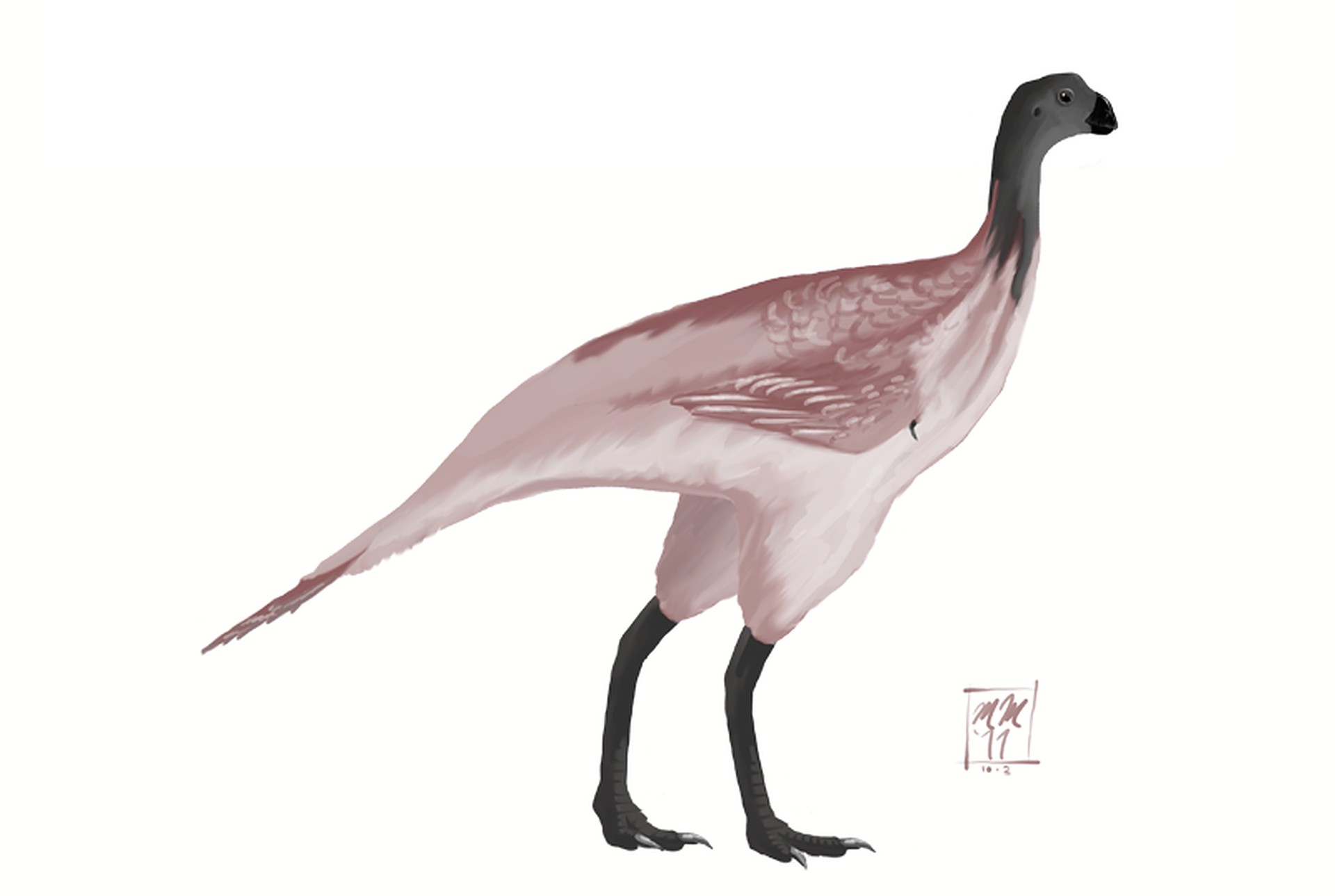
Avimimus was a bird-like dinosaur.
Its name means something like: "bird mimic".
He was a very fast, lightweight dinosaur belonging to the theropod group.
His legs were extremely long and slender, indicating that Avimimus was a highly specialized runner. His shins were long compared to his thighs, a feature common among escape animals.
| Profile | Avimimus |
|---|---|
| Prehistoric Era | late Cretaceous, about 85 - 70 million years ago |
| Order | Saurischia |
| Suborder | Theropoda |
| Family | Oviraptorosauria |
| Tribe | Avimimidae |
| Genus | Avimimus |
| Species | Avimimus portentosus |
| Height | 0.7 meter |
| Length | 1,5 meter |
| Weight | 15 kg |
| Territory | Mongolei |
Closer examination revealed that Avimimus had no or only rudimentary teeth in his parrot-like beak, indicating that he was probably a herbivore or omnivore.
Its diet may have consisted of small animals, insects, eggs, and some plant material.
In 1973, the first fossils of Avimimus were discovered by a Soviet-Mongolian expedition in the Gobi Desert.
In 2006, researchers found several Avimimus individuals in Mongolia near the village of Nemegt. This discovery site prompted researchers to formulate various hypotheses about the life of Avimimus.
Researchers were able to identify tiny ridges on the arm bones of Avimimus, which led them to believe that they served to anchor feathers. Illustrations of Avimimus therefore depict this dinosaur wearing feathers.
That Avimimus could fly, however, is doubted by most researchers.
The site at Nemegt in the form of a bone bed, where fossils of several individuals are found, gives reason to believe that these animals lived in colonies. This bone bed is the first discovered of oviraptors from the Late Cretaceous. Avimimus bone beds are unusual in that no juvenile individuals were detectable. This may indicate that the animals gathered to form a lek.
A lek is a place where several individuals gather to court a female.
However, a bone bed may also indicate swarming behavior by avimimus, or a shared roost.
Image source: Jaime A. Headden (User:Qilong), CC BY 3.0 https://creativecommons.org/licenses/by/3.0, via Wikimedia Commons
Conty, CC BY 3.0 https://creativecommons.org/licenses/by/3.0, via Wikimedia Commons
★Kumiko★, CC BY-SA 2.0 https://creativecommons.org/licenses/by-sa/2.0, via Wikimedia Commons
Matt Martyniuk, CC BY-SA 3.0 https://creativecommons.org/licenses/by-sa/3.0, via Wikimedia Commons